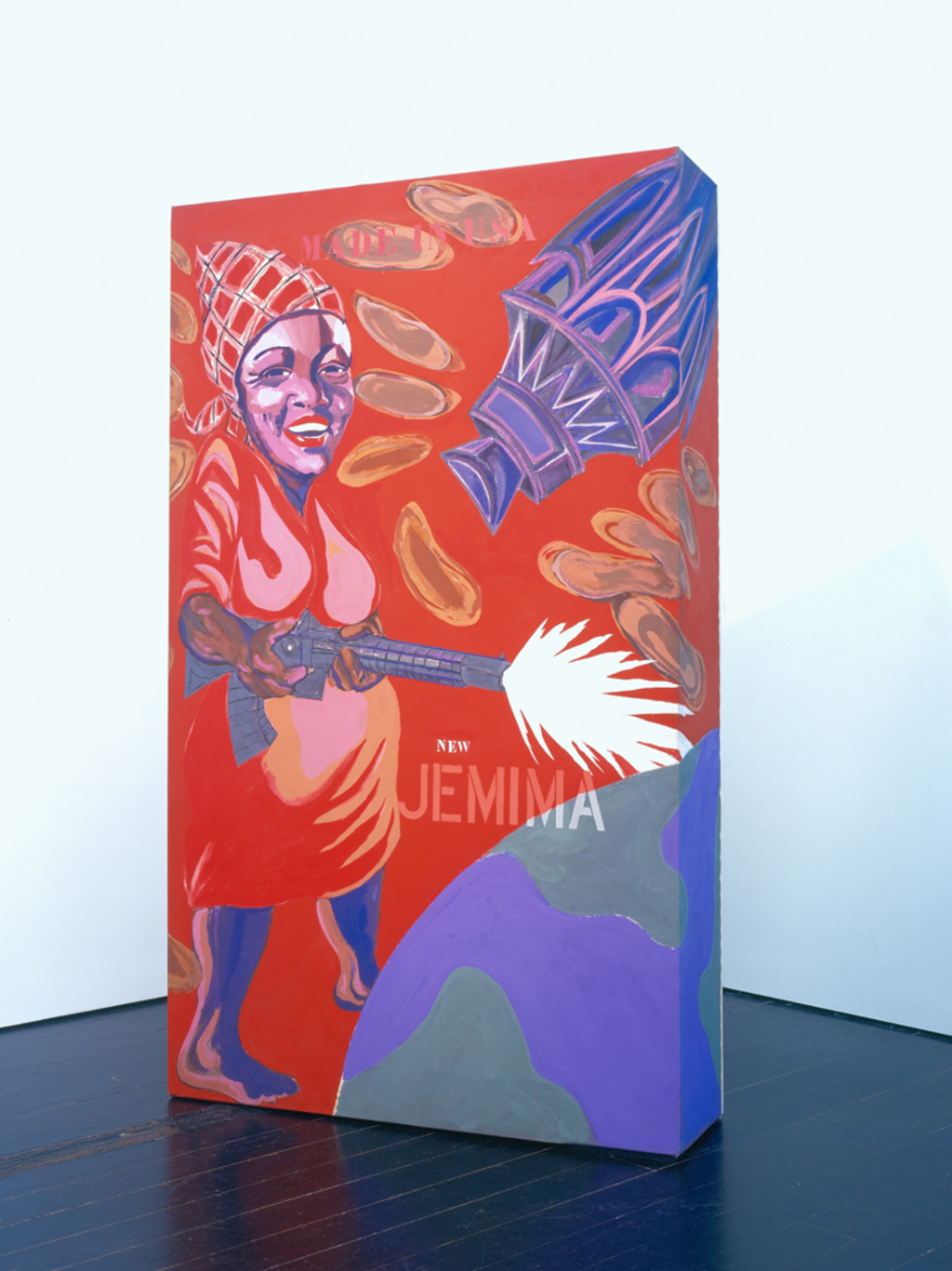In the 1960s, American artist Joe Overstreet produced a series of what he called “social protest paintings.” In these works, the events and politics of the Civil Rights movement cohere on canvas, creating a vivid artistic expression of dissent and resistance. One of his best-known works from the time, The New Jemima is a satirical, Pop art–inflected take on the racist “Mammy” stereotype personified by Aunt Jemima. Overstreet took aim at the ubiquitous pancake mix trademark, whose namesake was first popularized in 19th-century blackface minstrel theater. Here, Aunt Jemima appears not in her usual guise of cheerful Black servitude, but as a radicalized portrait of African American agency and empowerment. She wields an assault rifle that fires pancakes into the air, her domestic labor recast as ammunition, with a form-fitting dress and bold physicality that undercut the matron figure’s docile associations. In the top right corner, a purple object floats amidst the flying flapjacks, its metallic grooves echoing those of the machine gun below. Soaring above the Earth, it recalls the command service modules used for the Apollo lunar missions, suggesting Overstreet’s interest in the human space flight program. The words “Made in USA” appear in red block lettering across the top of the painting. The stenciled inscription gestures to the mass production and consumption of the freighted Aunt Jemima brand in the United States, while evoking Black Americans’ right to enfranchisement and equality as citizens of the United States.
Overstreet created the first version of this painting in 1964. With it, he married two distinctive currents in American visual culture, combining Pop art’s critique of consumer capitalism with the agitational tenor and iconoclasm of the Black Arts Movement. Six years later, he reprised the painting as a commission by Dominique and John de Menil for the 1971 exhibition Some American History. Stretching canvas over a plywood frame, he created a three-dimensional construction shaped like a pancake box, with Aunt Jemima’s reimagined persona towering at nearly nine feet.

